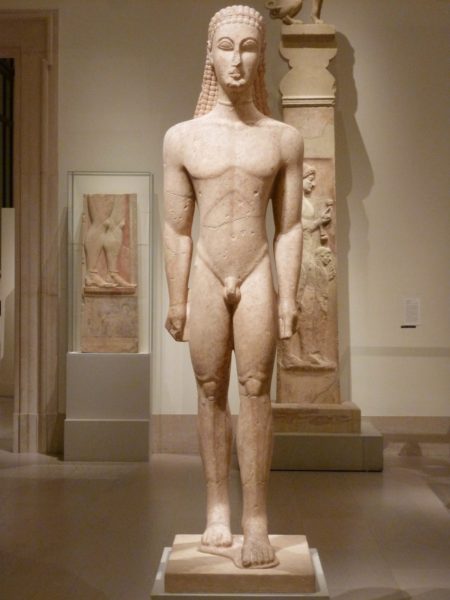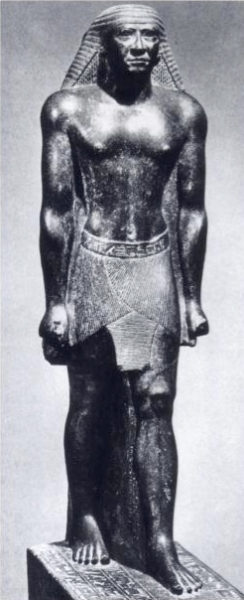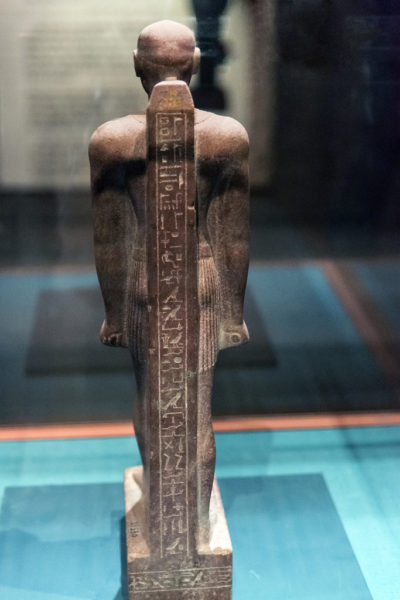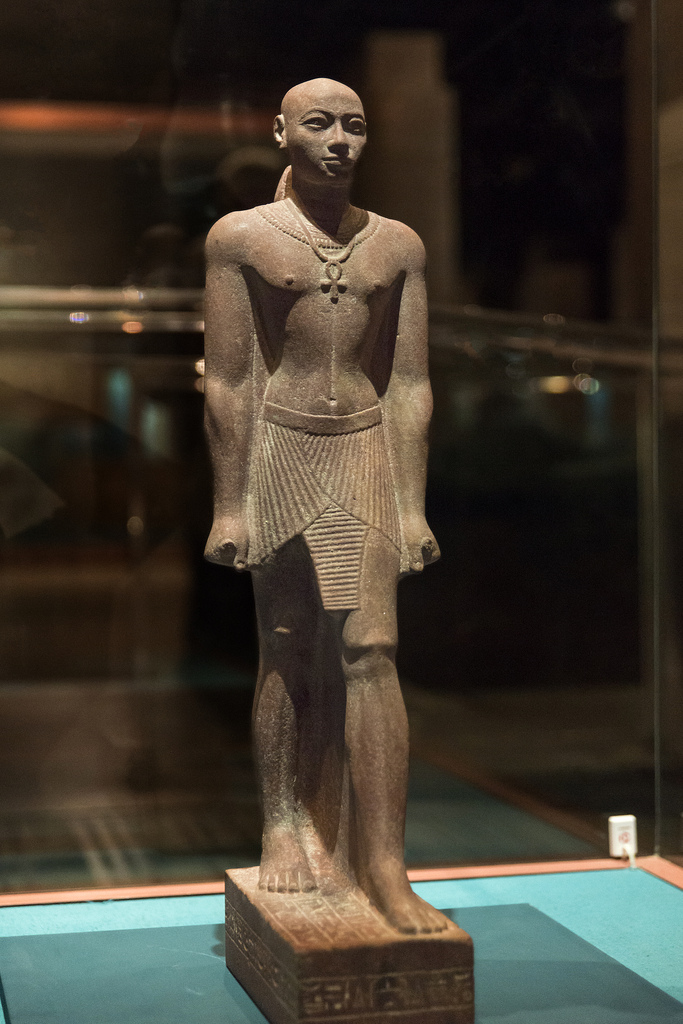Influences on early Greek statues
My first degrees were in Classical (Greek and Roman) archaeology. I studied at King’s College, which is part of the University of London. Much of my undergraduate degree was spent in the British Museum looking at material culture from Greece and Rome, and this training played an important part in my subsequent decision to work in museums, to focus my research on archaeological material and what it could tell us about the past. Out of all of the categories of objects that I have studied, I have always had a preference for sculpture, irrespective of its culture of origin.
I was recently asked if early Greek statuary had been influenced by Kemite sculpture. My response, because I was taught this when I did those first degrees, was that yes- there was no question that that the Greeks had been influenced by the statues they had seen in Egypt.
Early Greek sculpture
Two types of figure are represented in early life-size Greek sculpture: Kouroi (singular kouros) and Korai (singular Kore). These words mean youth/boy and girl in ancient Greek, and these statues functioned as votive offerings or funerary markers. One of the earliest fully preserved is now housed in the Metropolitan Museum of Art, New York (below). Believed to be from Attica, it dates from around 600-590 BCE and has a number of features in common with statuary from Kemet.

- The statue strides forward onto its left leg.
- The hands are clenched at the sides.
- The proportions are similar to statues that were produced in Kemet during during the seventh century BCE.
- The hair.
Kemite sculpture of the seventh century BCE

The statue on the left represents an Kemite official named Mentuemhat, who lived around the time the Twenty-sixth and Twenty-fifth dynasties. He was a priest of Amun. The proportions of Kemite sculpture changed depending on the period that it was made. We know that artists used a grid system on a block of stone to ensure that the correct proportions were adhered to. You can see on this statue the striding stance and fists that early Greek sculptors copied. There were differences, as would be expected when one culture is influenced by another: Greek statues do not have a back pillar (see below) a feature of all striding Kemite statues, which was often inscribed. Also, the Greek statue is naked. This is not something that is found in Kemite sculpture. Mentuemhet, wears a kilt on the statue here.

Studies have shown that Greek sculpture was also created on a grid system, and that the proportions are similar to those on Kemite sculpture dating to the seventh century BCE. There is also the more practical question of contact and alternative influences. Prior to the appearance of the life-size kouros figures, Greek sculpture had only been produced on a much smaller scale. Some scholars (R.M. Cook for example) have tried to argue that the striding stance and clenched fists are coincidental. The transfer of artistic style from one culture to another is rarely coincidental and we have no evidence for this pose prior to the Greeks having contact with Egypt.
And when making associations it is of course essential that contact and influence was possible. There was considerable contact between the two cultures during the 26th Dynasty (664-525 BC) in the form of Greek mercenaries and later colonists, at sites such as Naukratis in the Delta. Around the same time that the new sculptural style emerged in Greece.
Some scholars have suggested that Greek sculptors were influenced by statues from the Ancient Near East. There is influence on some Greek art, from this region, perhaps most notably on pottery and small scale figures. However, there are no close parallels for the early statues.
Greek artists adopted and then adapted a style of Kemite sculpture for their own cultural needs. Even during the early phases of its development there were regional differences that were found throughout the Greek world. In many respects, and this was a conclusion that I made based on my doctoral thesis, Kemite artists were much more skilled at incorporating outside influences onto their sculpture, whether it was a portrait or costume. This is not something that Greek and Roman sculptors did. Perhaps because they didn’t have thousands of years of a sculptural tradition.


I’m so pleased to have found this blog, and very happy to have read this article. Very clear. Thank you.
It was Diodorus Siculus who said in book III of his “General History” about the Egyptians (Kemites) circa 60 B.C.E that “And the larger part of the customs of the Egyptians are, as they hold, Ethiopian…and many other matters of a similar nature are Ethiopian practices, while the shapes of their statues and the forms of their letters are Ethiopian”.
Following the above logic, it would seem that the ancient Greeks were well aware that they were imitating “Ethiopian” designs. This seems to be common knowledge as even down to the time of Homer, the region of Kemet was agreed to be apart of Ethiopia. Strange how modern interpeters of a 2,000 year old text promoted the current discontinuity.
Great post.